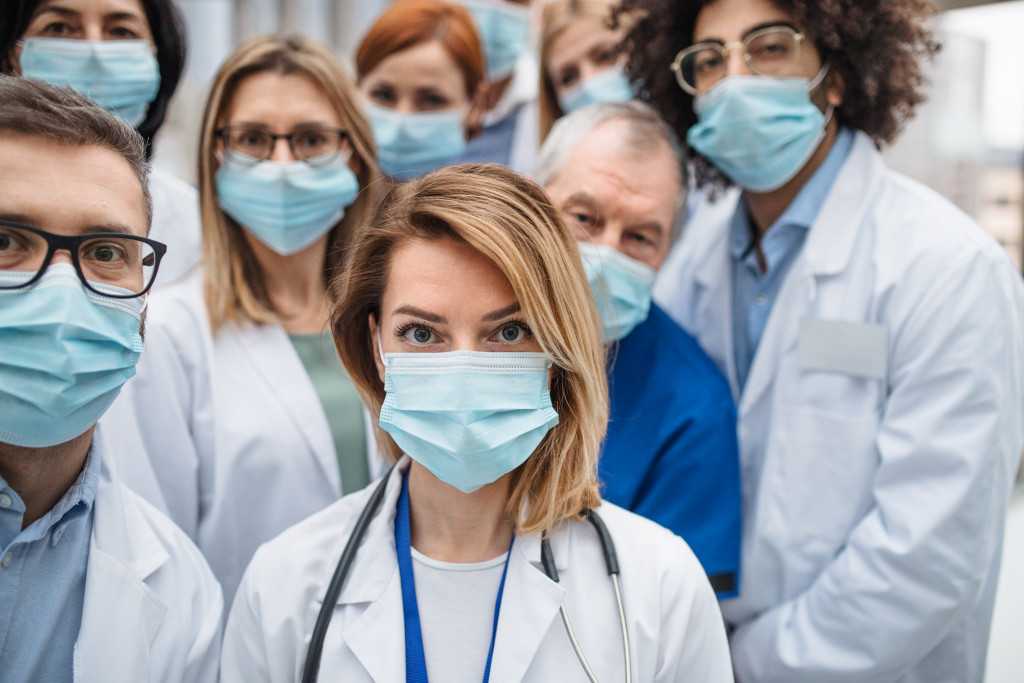Since the emergence of coronavirus disease 2019 (COVID-19) in late 2019, the United States and other countries worldwide have struggled to contain its spread. As of April 2022, much progress has been made in managing the pandemic compared to two years ago.
The most significant statistic demonstrating this progress is the decrease in total confirmed cases. In May 2020, the US had over 1.5 million confirmed cases. However, this number has since decreased by nearly 65% to 576,000 as of April 2022. This reduction can be credited to the implementation numerous preventative measures and protocols designed to slow down and control its spread.
In addition to government-issued actions, many individuals have also taken it upon themselves to become more conscious about their safety precautions. Health experts suggest that wearing a mask outside or in tight public spaces is one of the most important preventative measures against catching or spreading COVID-19. According to recent studies, approximately 85% of people wear masks any time they leave their homes due to increased awareness and understanding of how vital it is for public safety and health. Furthermore, people are also conscious of social distancing guidelines. When asked how often they practice physical distancing, even when outside their home, over 70% said they always follow these guidelines.
COVID-19 has become significantly more manageable today than two years ago, but it doesn’t mean that the government should stop implementing preventative measures and protocols. The virus is still alive, and it would be a mistake to take drastic actions too soon. Here are a few initiatives that should still be present today:
Mobile and At-Home Testing
Mobile and at-home testing for COVID-19 should remain a priority to identify and contain infection quickly and effectively. Early detection is essential, as it has been shown that people diagnosed with the virus early have higher odds of responding positively to treatment and avoiding severe complications. Mobile testing helps to identify those exposed and stop the spread of the virus before it becomes too widespread. Additionally, mobile testing allows individuals who may not be able to access traditional health centers or are uncomfortable visiting them due to fear of contracting the virus, such as seniors or immunocompromised patients, to get tested regularly.
At-home testing for COVID-19 provides an additional layer of convenience and safety by allowing people to test themselves from home, eliminating potential exposure risks when attending healthcare facilities. Home testing kits enable individuals to use their saliva samples to detect any virus presence. This type of test is relatively accurate compared to other diagnostic tests currently available, such as antigen tests or PCR tests which require laboratory equipment and careful handling by medical professionals. Furthermore, at-home tests provide a more affordable solution since they are typically much cheaper than other types of diagnosis methods available.
In addition to providing convenience and accuracy, home testing can also help reduce the burden on healthcare resources, given that only those who test positive would require further medical attention.
Mobile Vaccinations

Vaccinations have been proven to be a powerful tool in combating the virus and reducing its spread. Over 30% of people have received one or more doses of a COVID-19 vaccine. Mobile vaccinations effectively ensure everyone can access these lifesaving treatments regardless of location, income level, or mobility limitations.
Mobile vaccination centers can travel to underserved communities where individuals may not otherwise have access to traditional medical care and provide onsite care. Mobile vaccination centers offer much-needed relief to overwhelmed healthcare facilities by providing support when needed most. These portable units also make it easier for those who cannot leave their homes due to health restrictions or other reasons to receive essential vaccinations. The government can partner with companies that provide a gooseneck cargo trailer in bulk for mobile vaccination centers to help contain the virus.
Contact Tracing
Contact tracing is another essential tool for preventing the spread of COVID-19. It is a process in which those who have tested positive are identified and their contacts located, tested, and isolated if necessary. Contact tracing is integral in preventing the virus’s spread before it becomes too widespread. This can help quickly reduce the number of infected people and protect those at risk of contracting the virus. The government should prioritize contact tracing initiatives to ensure everyone gets help.
Online tools can help facilitate contact tracing and enable the government to monitor potential hotspots. These tools can help detect those who may have been exposed to virus carriers, alert individuals of possible risks in their area, and guide how to protect themselves from further exposure best.
Final Thoughts
It is clear that much progress has been made in managing the pandemic over the past two years, but there is still a need for continued preventative measures. Mobile testing, home testing kits, mobile vaccinations, and contact tracing initiatives should remain a priority as they are essential tools for identifying infection quickly and reducing its spread. The government must continue to prioritize these actions to ensure that everyone is safe from this deadly virus.




